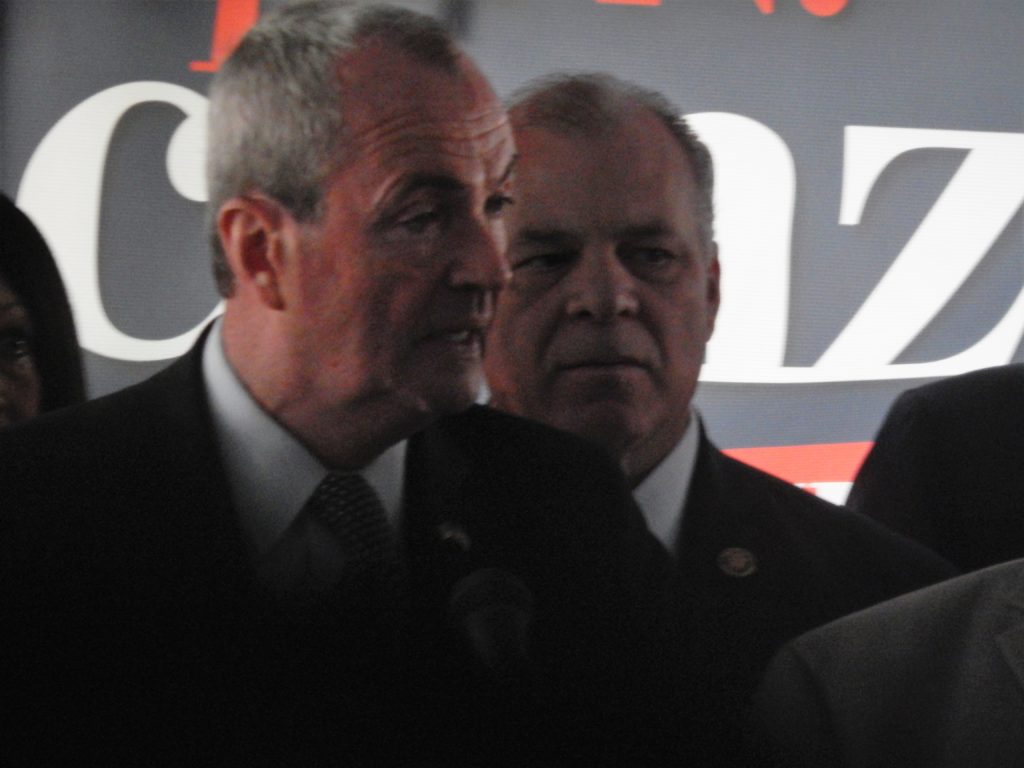Murphy, Sweeney On Verge Of School Funding Solution

BY ED RICHARDSON
New Jersey has plenty of fiscal problems it must start solving. Few, though, are more important to New Jersey families, or the future of our state, than school funding. Students across the state are being shortchanged of educational resources. It’s long past time for the adults in charge to step up and do their job.
This year, at long last, there are some encouraging signs. Gov. Murphy’s proposed budget contains a $341million increase in direct state aid to schools, increasing state funding to 96 percent of school districts. It’s a down payment on a return to full funding of SFRA, New Jersey’s smart, progressive school funding law, passed in 2008 but neglected and ignored by the Christie administration. Also recently, Senate President Steve Sweeney proposed legislation that would give some districts the flexibility they need to better meet their own obligations to students in their own public schools. While the devil is always in the details, having the governor and the senate president both working on serious proposals to address the problem is a welcome development for public education advocates.
The governor’s proposed budget is important because it immediately infuses much-needed funds into the system. There is no solution to school funding that simply shuffles the current inadequate funding among districts without adding significantly to it. That’s the starting point for any lasting solution.
Sweeney’s proposal also deserves a careful look, because it not only addresses the immediate needs of a number of hard-hit districts through an additional infusion of funding, but also helps set the stage for a fairer, more sustainable approach in future years.
Sweeney’s legislation sets out a seven-year timeframe to fix some of the inequities that arose due to Christie’s negligent approach to school funding. In short, while all districts were hurt under the previous administration, some – particularly those with rapid growth – were hit harder than others. Essentially, whether districts gained students, lost students or maintained steady enrollment, their state aid from year to year was not calculated based on actual enrollment, but was instead based on the previous year’s aid. Over several years, that led to high-growth districts seeing far less aid per student, while other districts with stable or declining enrollment fared better. Compounded over several budget cycles, the inequities grew quite stark.
Districts that have received less state aid than what the SFRA formula called for have made up the difference by funding more than their local fair share, cutting school spending, or a combination of the two. For them, Murphy’s budget is an important first step, but the state cannot close an eight-year funding gap in one year.
For districts that have received more than what the formula would have provided, and have been funding less than their local fair share, Sweeney proposes scaling back state funding to free up additional dollars for those that are underfunded. However, again, leveling them off in one year would be harsh, especially when state law prevents them from raising their local fair share beyond two percent.
Sweeney recognizes that problem, and his legislation makes allowances for some of those districts to be able to grow their local share of funding slowly over several years to make up for what is lost as the state transitions back to more equitable funding. He also proposes expanding the cap for some such districts. That’s good, though it should go even further, allowing all districts the same flexibility to meet their local obligation to provide a thorough and efficient education to students.
It is also important to understand that about one-third of our school districts spend below the adequacy level (amount necessary to ensure a thorough and efficient education)dictated by SFRA. Among them, according to the Education Law Center, 33 districts are below adequacy entirely because of local revenue gaps, while 86 are below because of state aid gaps, and another 73 are below because of a combination of state and local revenue gaps. Jersey City is the most extreme example of the first category – the district is $100.9 million below adequacy, all of which is attributed to not meeting its local fair share. While the district has consistently increased local school funding over the years, its school taxes would rise significantly to cover the gap. For this unusual situation, Sweeney has proposed an alternative source of local revenue that is worthy of consideration in addition to growing their local fair share
In addition to providing cap relief only to some districts, and not all that need it, Sweeney’s plan falls short because of its timing. It would begin to strip aid from districts in the coming school year, after they have already set their budgets and after local tax rates have already been locked in. Because we are so late in the budget process, those districts could not make up for lost funding and would be left with no option but to slash their programs just months before the school year starts.
A better approach would be to implement the reforms for the 2019-20 school year, so that districts can plan appropriately next spring for the changes that must come. For the current year, the governor and Legislature should find another way to provide the immediate relief that Sweeney’s legislation provides some New Jersey districts without triggering harmful budget cuts in others. That’s good for all students, which means it’s good for New Jersey.
Murphy and Sweeney, working together, have a chance to show New Jersey that we are in a new era where the needs of hard-working New Jersey residents come first. Combining the best of their approaches to school funding, while protecting children in all of our communities during the difficult transition back to SFRA, would send that message loud and clear.
Ed Richardson is Executive Director of the 200,000-member New Jersey Education Association.






More money is not, and has never been the answer. Accountability and efficiency is.